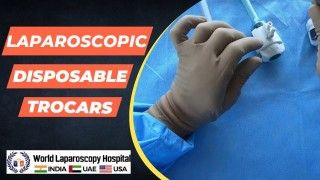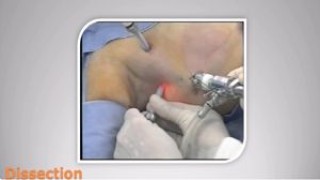Precision Redefined: eTEP TAR Technique for Complex Diastasis Recti with Epigastric Hernia
Add to
Share
30 views
Report
4 days ago
Description
At World Laparoscopy Hospital (WLH), excellence in advanced hernia surgery meets innovation through the Minimally Invasive Extended Totally Extraperitoneal Transversus Abdominis Release (eTEP TAR) technique. This state-of-the-art procedure has redefined the management of large diastasis recti and epigastric abdominal hernias, offering patients a superior alternative to traditional open reconstruction — with less pain, quicker recovery, and lasting results. A Revolutionary Advancement in Abdominal Wall Reconstruction The eTEP TAR technique is a next-generation approach in the field of minimally invasive surgery. Unlike conventional open or intraperitoneal mesh repairs, eTEP TAR allows the surgeon to operate within the retrorectus (extraperitoneal) space, avoiding direct entry into the abdominal cavity. This ensures minimal trauma to intra-abdominal organs while providing robust reinforcement of the abdominal wall. At WLH, under the guidance of Prof. Dr. R. K. Mishra, a globally recognized pioneer in laparoscopic surgery, surgeons perform this complex operation with unmatched precision using 3D high-definition laparoscopic systems and energy-based dissection tools. Why eTEP TAR is Ideal for Large Diastasis Recti and Epigastric Hernias Anatomical Restoration: The procedure allows complete midline closure by reapproximating the rectus muscles, effectively correcting diastasis recti and restoring functional abdominal wall integrity. Comprehensive Mesh Reinforcement: A large, well-placed mesh in the retrorectus plane provides durable support without contacting the intestines, reducing long-term complications like adhesions or bowel obstruction. Reduced Pain & Morbidity: The minimally invasive approach minimizes muscle division and wound-related issues, leading to reduced postoperative pain and faster return to normal activity. Superior Cosmetic Outcome: Small incisions, precise anatomical dissection, and tension-free closure ensure excellent cosmetic results — a major benefit, especially for younger and active patients. Step-by-Step Excellence at WLH Creation of the eTEP Space: The surgeon carefully develops the extraperitoneal working space endoscopically. Dissection of the Retrorectus Plane: Bilateral retrorectus spaces are connected across the midline to facilitate mesh placement. Transversus Abdominis Release (TAR): Controlled division of the transversus abdominis muscle allows for adequate medial mobilization and tension-free midline closure. Diastasis & Hernia Repair: The rectus muscles are approximated, and any epigastric hernia defect is closed with strong sutures. Mesh Placement: A wide synthetic mesh is placed in the retrorectus space, ensuring durable reinforcement without peritoneal breach. Training and Excellence in eTEP TAR at WLH World Laparoscopy Hospital is not only a global referral center for complex hernia repairs but also a world-class teaching institution. Surgeons from over 138 countries are trained here in cutting-edge minimally invasive techniques. The hands-on eTEP TAR training modules at WLH focus on: Advanced anatomical understanding of the abdominal wall. Step-by-step laparoscopic and robotic eTEP-TAR dissection. Safe mesh handling and placement. Management of large hernias and recurrent cases. World Laparoscopy Hospital – A Global Leader Located in Gurugram, India, and accredited by leading international surgical societies, WLH stands at the forefront of minimally invasive surgery innovation. Every procedure, including eTEP TAR, is performed under strict safety protocols, ensuring exceptional patient outcomes. With the integration of robotic surgery, 3D visualization, and AI-assisted imaging, World Laparoscopy Hospital continues to lead the evolution of hernia and abdominal wall reconstruction. Conclusion The Minimally Invasive eTEP TAR at World Laparoscopy Hospital represents the perfect harmony of science, skill, and surgical precision. For patients suffering from large diastasis recti or epigastric abdominal hernias, it offers renewed confidence, strength, and quality of life — all with minimal scars and maximum safety.
Similar Videos






